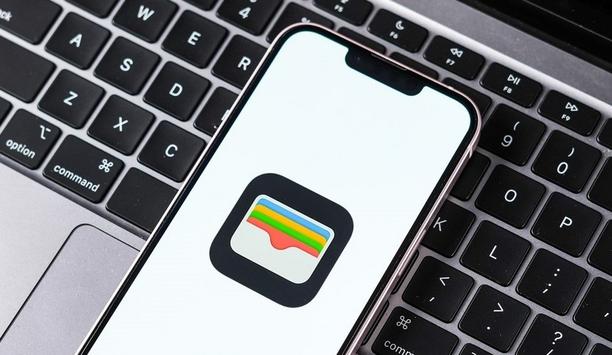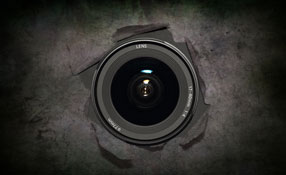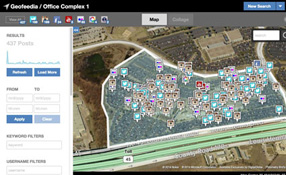Iris recognition has been used as a biometric for access control applications for many years, but we have heard a lot more lately about fingerprint scans. However, iris recognition has many advantages over fingerprints and other biometrics, and the technology has come a long way.
Mark Clifton, vice president of the Products and Services Division of SRI International, calls the iris a “protected” biometric, typically not injured and unlikely to be contaminated as fingers or hands might be. The iris is also a more complex biometric, providing around 250 points of identification (versus 13 or so in a fingerprint). Accuracy is therefore better: The rate of false positives is about 1 in 1.4 million for a single iris scan; the likelihood shrinks to 1 in 1.4 trillion if both eyes are scanned and identified. In contrast, there might be a false positive fingerprint scan once in 100,000 scans. (Clifton emphasizes that all numbers are approximates.)
SRI International highlighted iris recognition at ASIS 2014, featuring the IOM PassPort SL, a commercially available biometric product that enables customers to integrate face capture and dual-capture iris recognition directly into existing building/facility turnstiles, infrastructures or entrances at high-traffic locations such as corporate lobbies, airports, sporting events and security checkpoints. The dual-modality system provides a good face image and good eye images for each subject, thus providing additional certainty.
The “Iris on the Move” (IOM) capability was developed three or four years ago at SRI and has matured from a product line of small systems that control access on the side of a door to high-throughput systems that can now identify 30 people per minute, walking through a door in full stride without stopping to find an ID card. What differentiates SRI’s technology is the ability to identify irises from a distance and on the move, with no need to look directly into a device, outdoors or indoors, and not depending on variables of lighting.
High-resolution cameras used in SRI’s systems provide anywhere from 80 pixels across the iris to hundreds of pixels |
As someone walks through the system, the camera instantaneously finds the face and eyes, provides illumination, captures the irises, recognises them, and opens a gate or door. The system uses a near-infrared light source that is invisible. There is no limit to database size, and SRI has systems in the field currently that can recognize a single iris against a database of 6 to 7 million. “As long as your eyes are open and we can see your irises, we can process them,” says Clifton.
Using a high-throughput system is more expensive, but a return on investment (ROI) is easy because higher throughput decreases the number of gates required, says Clifton.
Enrollment in the system might involve a self-service kiosk, where a user would input name and other information then push a button to capture a face and iris image. There is also a handheld enrollment system.
High-resolution cameras used in SRI’s systems provide anywhere from 80 pixels across the iris to hundreds of pixels, depending on the product and the distance away it operates – some are at 18 inches, some at a meter and some at 3 meters (about 10 feet).
Markets for iris recognition products include access control and time and attendance, and the next generation of products will likely deal with consumer applications in the home. As the price of iris recognition capabilities drop, they will also become more common in financial transactions.
"As long as your eyes are open and we can see your irises, we can process them" |
Applications include use of a handheld iris recognition system for time and attendance. A large construction company uses the system at 34 different construction sites with 18,000 employees. The system reduced payroll fraud by 10 percent. It can also verify the identification of people working in the field and confirm their eligibility, licensing, etc.
Used in conjunction with card-based systems, an iris recognition system can address the problem of lost or forgotten cards. If there are thousands of people using their badges for access control, for example, it is likely that 200 or 300 each day might forgot or lose their badges. Using an iris recognition kiosk to furnish those forgetful employees with temporary badges could eliminate the need for one or two guard positions to fulfill that function.
Iris recognition can be used to replace card access control in applications where the card system might be circumvented. For example, Auburn University in Alabama uses “Iris on the Move” to restrict access to its athletic facility, eliminating the need for keys or access cards.
One still hears privacy concerns related to capturing biometric information, especially in the United States. However, people are often willing to give up “privacy” if there is an advantage, such as convenience. “When you think about the amount of personal information people give up [on social media], they shouldn’t worry about someone having their face or iris,” Clifton comments.
The rest of the world is much more accepting of biometrics. The systems are used commonly around the world – whether to manage entitlement programs in India or for voter ID in Brazil. Iris recognition systems can even be used in cultures where women wear burqas or other garments that cover their faces. For example, SRI has a system installed at a woman’s university in Saudi Arabia.
SRI International is primarily a research and development organization and has been behind recent technology advancements in several markets, including Apple’s Siri (conversational interface), the DaVinci surgical robot, and Nuance (voice recognition). The company’s roots (and focus on optics and video) go back to the old RCA Laboratories in Princeton, N.J. Clifton works in the Products and Services Division, which pushes technology out of the lab to create actual products.










































